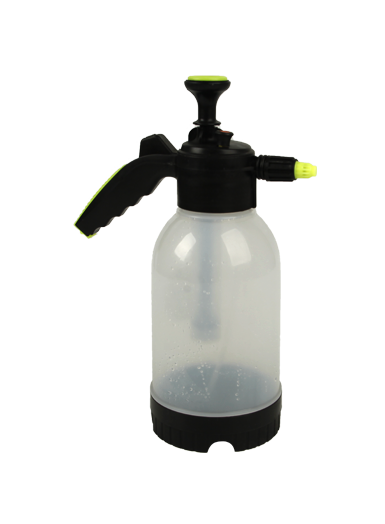It Is A Professional Sprayer Manufacturer Integrating Research, Design And Development.
+86-15824002009 Contact UsWhen it comes to maintaining a vibrant and healthy garden, having the right tools is essential. One such tool that stands out for its versatility and ease of use is the garden sprayer. Particularly, the 2L garden sprayer has become a popular choice for both amateur and professional gardeners. It is the size for small to medium-sized gardens, offering convenience without compromising on performance. However, the quality of the materials used in manufacturing the sprayer plays a crucial role in ensuring its effectiveness, durability, and longevity.

The materials used in the construction of a 2L garden sprayer determine its overall performance, lifespan, and resistance to wear and tear. Garden sprayers are often exposed to harsh environmental conditions, such as direct sunlight, moisture, and chemicals. Therefore, the components need to be strong, resistant to corrosion, and durable enough to handle repeated use.
Quality materials ensure that the sprayer functions efficiently, maintains its appearance over time, and provides a smooth spraying experience. Additionally, materials that are resistant to the chemicals commonly used in gardening, such as fertilizers, herbicides, and pesticides, are vital to maintaining the integrity of the sprayer.
The tank is the main body of the sprayer, where the liquid solution is stored before it is applied. The material chosen for the tank must be lightweight, durable, and resistant to chemicals, as the sprayer will often be used to carry different types of liquids that may be corrosive or reactive.
High-Density Polyethylene (HDPE): HDPE is one of the commonly used materials for garden sprayer tanks. It is known for its durability, resistance to chemicals, and ability to withstand the wear and tear of regular use. HDPE is also resistant to UV rays, meaning the tank will not degrade or become brittle when exposed to sunlight. Additionally, it is lightweight and easy to carry, making it a fit for a 2L garden sprayer.
Polypropylene (PP): Another high-quality material used for sprayer tanks is polypropylene, which is known for its resistance to acids and alkalis. PP is highly durable and resistant to impact, making it ideal for outdoor tools like garden sprayers that are prone to rough handling. It is also lightweight and corrosion-resistant, ensuring that the tank will maintain its integrity even after prolonged exposure to chemicals.
PVC (Polyvinyl Chloride): Some garden sprayers use PVC for their tanks. PVC is a strong, chemical-resistant plastic that provides a good balance of cost and durability. While it may not be as resistant to UV radiation as HDPE, it is still a reliable material for the tank of a 2L garden sprayer.
The pump mechanism of a garden sprayer is responsible for pressurizing the liquid inside the tank, enabling it to be sprayed through the nozzle. The materials used for the pump components must be sturdy and capable of withstanding the repetitive mechanical action of pumping.
Brass or Stainless Steel: High-quality 2L garden sprayers often feature pumps made from brass or stainless steel. Brass is known for its corrosion resistance and durability, making it a reliable choice for components that are exposed to chemicals and moisture. Stainless steel, on the other hand, is even more resistant to corrosion and is highly durable. Both materials ensure that the pump mechanism remains effective for an extended period, even under heavy use.
Durable Plastic Components: In some sprayers, the pump mechanism may include plastic components, but these are typically reinforced with fiberglass or other strengthening agents to ensure durability and prevent breakage. High-grade plastic pumps are often found in more affordable models, offering a good balance between performance and cost.
We will provide you with the latest product
information as soon as possible
